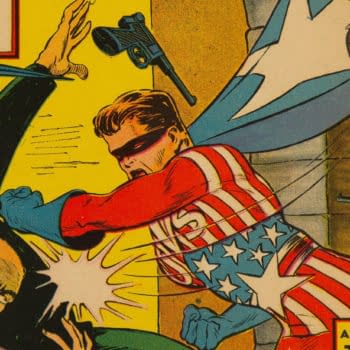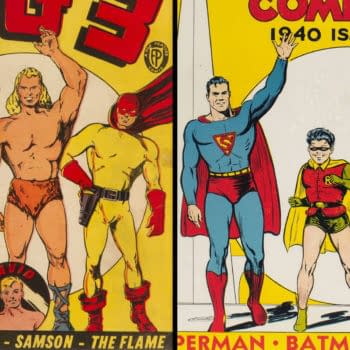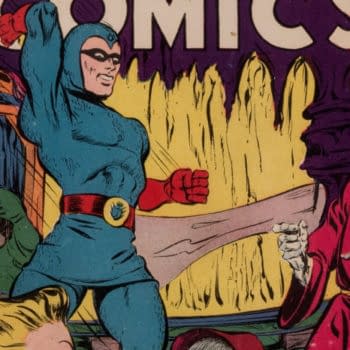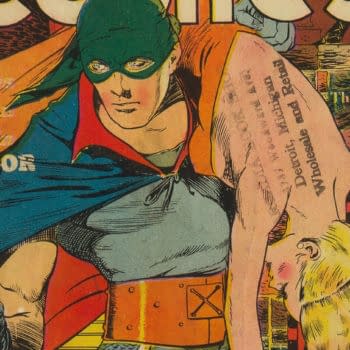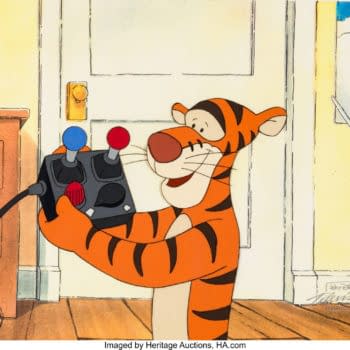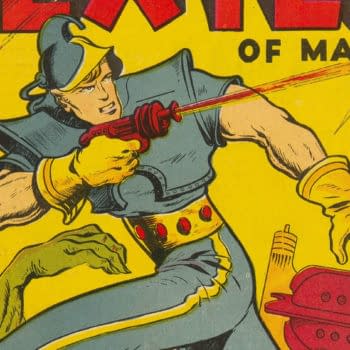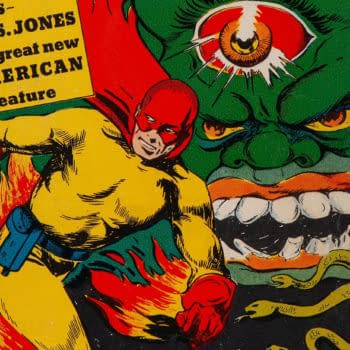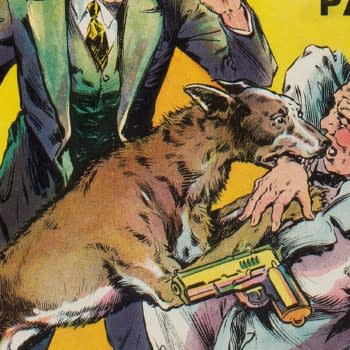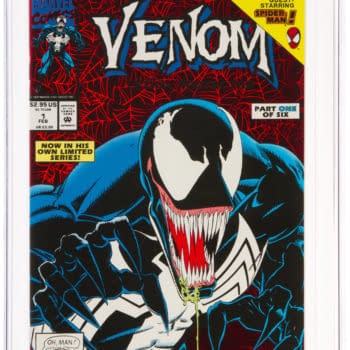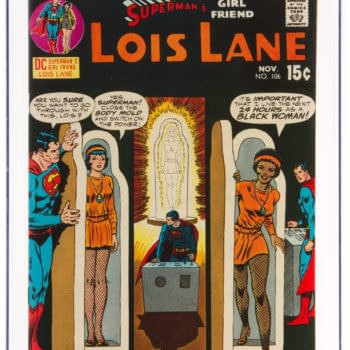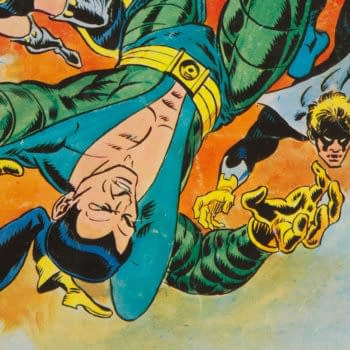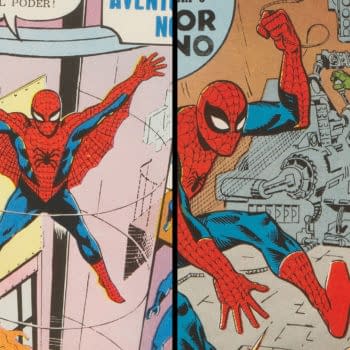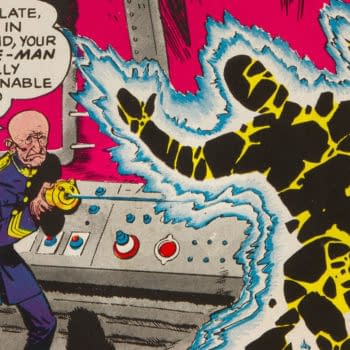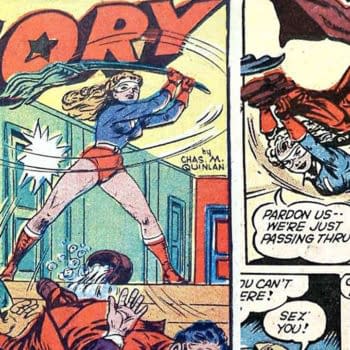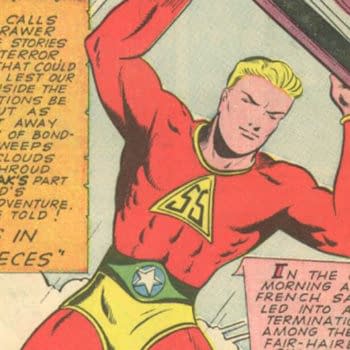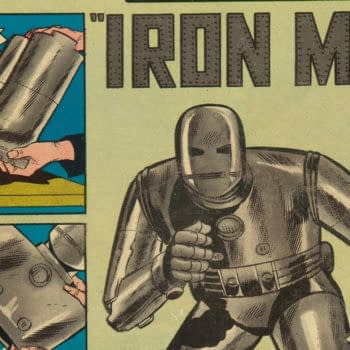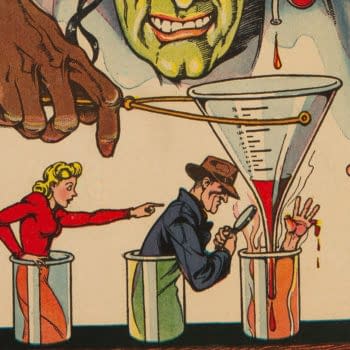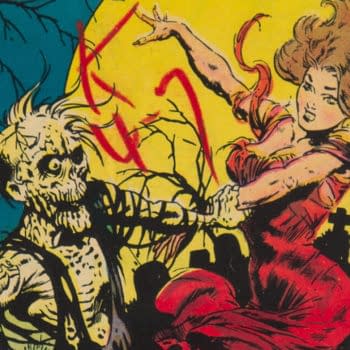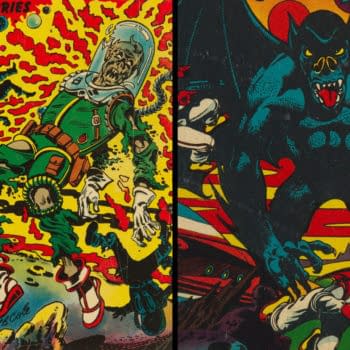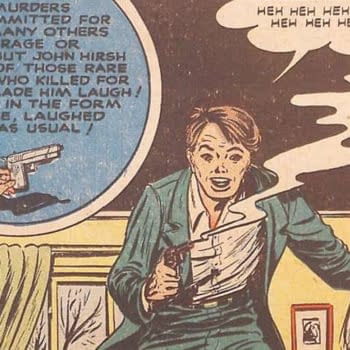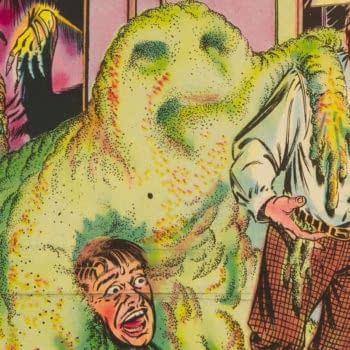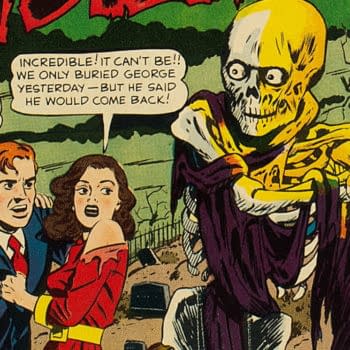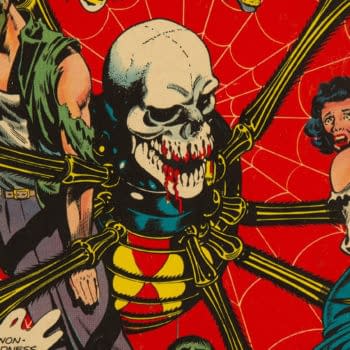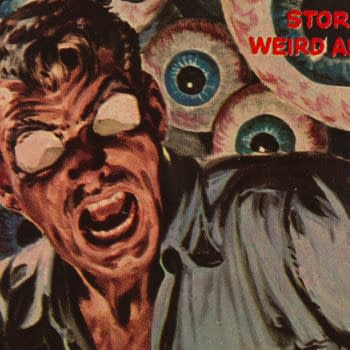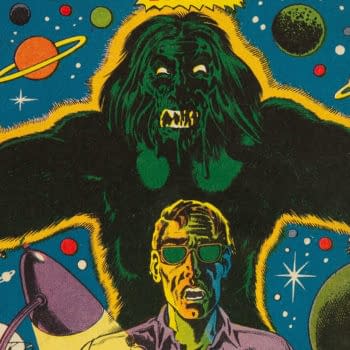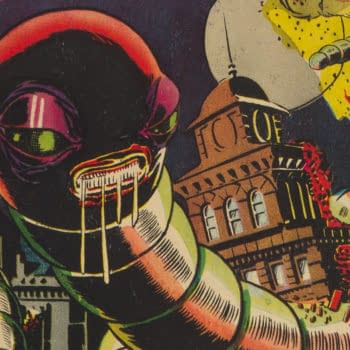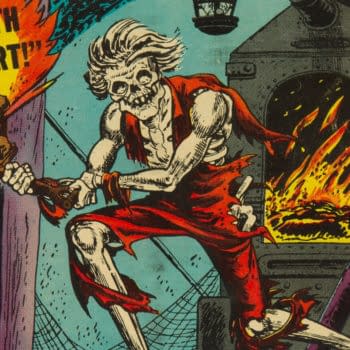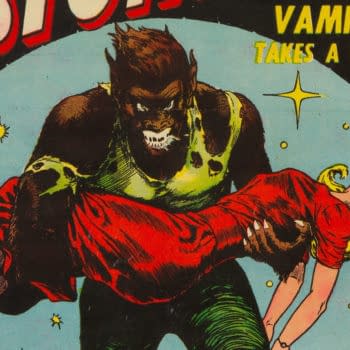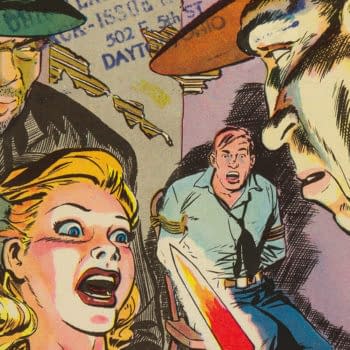The early Golden Age era of Fox Feature Syndicate includes a large number of surprisingly rare comic books.
Heritage Sponsored Archives
Victor Fox was not one to shy away from copying his competitors and Big 3 #1 is another clear-cut case of Fox mimicking a DC Comics release.
Blue Beetle faces a personification of Death rising up from the underworld in this strange story in Mystery Men Comics #30.
Mystery Men Comics #3 is best known for its Lou Fine cover, but what does it have to do with William Peter Blatty of The Exorcist fame?
Released during a pivotal period in Golden Age comic book history, Wonder Comics #2 has a historically fascinating backstory.
A production cel from The New Adventures of Winnie the Pooh featuring Tigger playing with a gaming device hits auction today. Sponsored.
Dick Briefer's Rex Dexter of Mars may draw inspiration from a pair of All-American Comics sagas, which he takes in weird directions.
An obscure Fox Feature Syndicate character who got his own title and fan club, U.S. Jones debuted in Wonderworld Comics #28.
Blue Ribbon Comics is the debut comic book title from MLJ Magazines, and Rang-A-Tang the Wonder Dog was its first star.
Venom: Lethal Protector was a six-issue comic published by Marvel in 1993, written by David Michelinie and drawn by Mark Bagley, Ron Lim and Sam de la
Superman's Girl Friend, Lois Lane #106 from 1970 is one of those comic books you look at and can't quite believe it. The cover by Curt Swan and Murphy
The now-legendary material from X-Men #94-96 was published for the Spanish market in 1978 by Ediciones Vértice with a different cover.
International editions of key comic books like Brazil's O Homem-Aranha have been gaining popularity among collectors in recent times.
The debut of Doom Patrol in My Greatest Adventure #80 in 1963 is an underappreciated moment in DC Comics history.
Captain Aero Comics featured an eclectic mix of characters including Miss Victory, Flagman, Alias X, and a magician named Solar.
Silver Streak Comics got a very brief reboot in the post-WWII era with stories that included giving Silver Streak a falcon sidekick named Zoom
One of the most popular Silver Age Marvel keys of the past decade, Tales of Suspense #39 featuring Iron Man has some fascinating inspirations.
Gus Ricca's incredible cover of Dynamic Comics #11 for publisher Harry A. Chesler has an equally fascinating story behind it.
Sid Check and Frank Frazetta's cover for Beware #10 might be one of the most obscure comic book covers Frazetta ever had a hand in.
L.B. Cole's memorable cover for Jay Disbroy's interior story in Ghostly Weird Stories #122 is a wild example of Cole science fiction.
D.S. Publishing's Exposed True Crime Cases got off to a cold-blooded start in the first two issues of the Pre-Code era series.
Beware Terror Tales #4 has a cover by Spectre co-creator Bernard Baily that practically begs you to read the story behind it.
As his Senate testimony shows, Dark Mysteries' William K. Friedman knew what buttons to push when it came to comic book horror.
The cover of 1952's Startling Terror Tales #11 is a prime example of L.B. Cole's cover art philosophy on his Star Publications titles.
Legendary painter Norman Saunders is remembered for his pulp covers, but his Worlds of Fear #10 work is one of his best-known comic covers.
Startling Terror Tales #13 features a boldly lurid cover by L.B. Cole for Jay Disbrow's interior story "Love from a Gorgon".
One of the most famous Steve Ditko covers of the 1950s, Charlton's The Thing #15 has a wonderfully weird interior story to match.
Marvel/Atlas' Journey into Mystery #15 is another mid-1950s example of radiation-transformed mutants in comic books.
Blurb to the contrary, Harry Anderson's cover for Astonishing #32 represents the interior story "The Werewolf Takes a Wife" by Paul Reinman.
Fawcett, the publisher best known for Captain Marvel produced one of the most notorious crime comic issues of the 1950s era.


